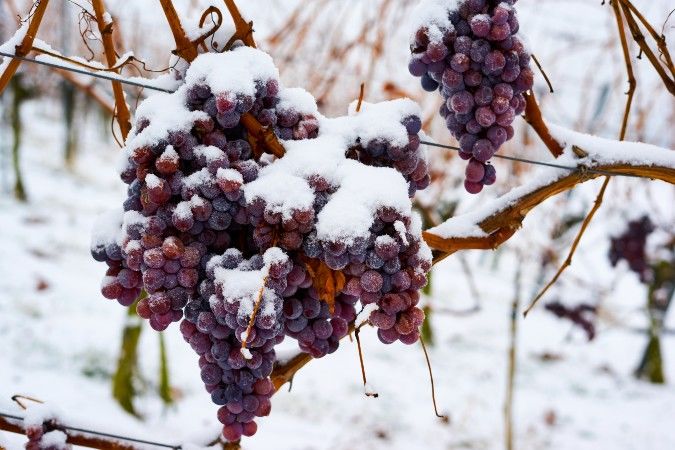When you’re considering Canadian sweet wine, you’re really considering icewine. This fabulously concentrated drink can only be made in bone-chilling temperatures when the mercury drops to a minimum of -8˚C. The grapes are harvested and pressed with the grapes still frozen, intensifying the flavour and creating a luscious but balanced end product.
A variety of grapes are used to make Canadian icewine, but the most popular are Cabernets Franc and Sauvignon for red icewine, and Riesling and the widely grown Vidal grape for white. Like the best sweet wines, icewine is the perfect match for desserts, but also pairs exceptionally well with blue cheese and also salty foods such as olives and anchovies.

This year’s IWSC saw an exceptionally strong line-up of Canadian sweet wines. Top of the list was the Inniskillin Icewine Vidal 2019, which scored an impressive 96 out of 100 points, scooping a Gold medal in the process. The judges loved the fine balance between the sweetness and freshness of the wine.
Another high scorer was Reif Estate Winery’s Grand Reserve Icewine Vidal 2020 (95/100pts). Reif, located in Ontario’s warmest sub-appellation, is one of Niagara-on-the-Lake’s founding family wineries, having been established in 1982. This particular bottle wowed the judges with its focus and aromatics, winning praise as the ‘perfect example of the variety and the style’.
In an impressive feat, Inniskillin won a second Gold medal for its Icewine Riesling 2021 (95/100pts) thanks to bright flavours of nectarine and Mirabelle plum and complexity from fresh flowers and earl grey tea notes.
Each bottle of Canadian sweet wine entered into this year’s IWSC was tasted blind by a first-class panel of experts comprised of Master of Wine Alistair Cooper, Isa Bal MS, Vincenzo Arnese and Camilla Bowler.
If you’re a sweet-wine fan and want something different to a Sauternes or Tokaji, Canadian sweet wines are where to head. Here are some of the best from this year’s IWSC.

HOW DO WE JUDGE THESE WINES?
We run a tightly structured, rigorous wine tasting process. That means that each wine sample is pre-poured into numbered glasses and assessed blindly by the judges. Most importantly, our IWSC wine judges are experts in their field, who work across all sectors of the wine industry. For evidence, see our full list of judges.
HOW DO WE SCORE THESE WINES?
Only the best wines sampled receive a Gold or Silver award. For example, to win Gold, wines have to score between 95 and 100 points. Meanwhile, Silver wines range from 90 to 94 points. Click here to read more on our scoring system.
MORE FROM CLUB OENOLOGIQUE
Club O is a premium lifestyle publication for curious and discerning wine and spirits lovers. Renowned for inspiring stories and trusted expertise, we connect people to the joys of the world, through the lens of wine, spirits and other interesting drinks. Based in London, our team of expert writers seek out thoughtful stories that introduce our readers to new people, places, drinking discoveries and insights, as well as exploring fresh perspectives on familiar themes. Membership to The Collection offers exclusive access to leading critics’ tasting reports, scores, tastings and events, especially tailored to collectors and investors. Our flagship Club Oenologique magazine offers even more insights for enthusiasts and collectors.




















